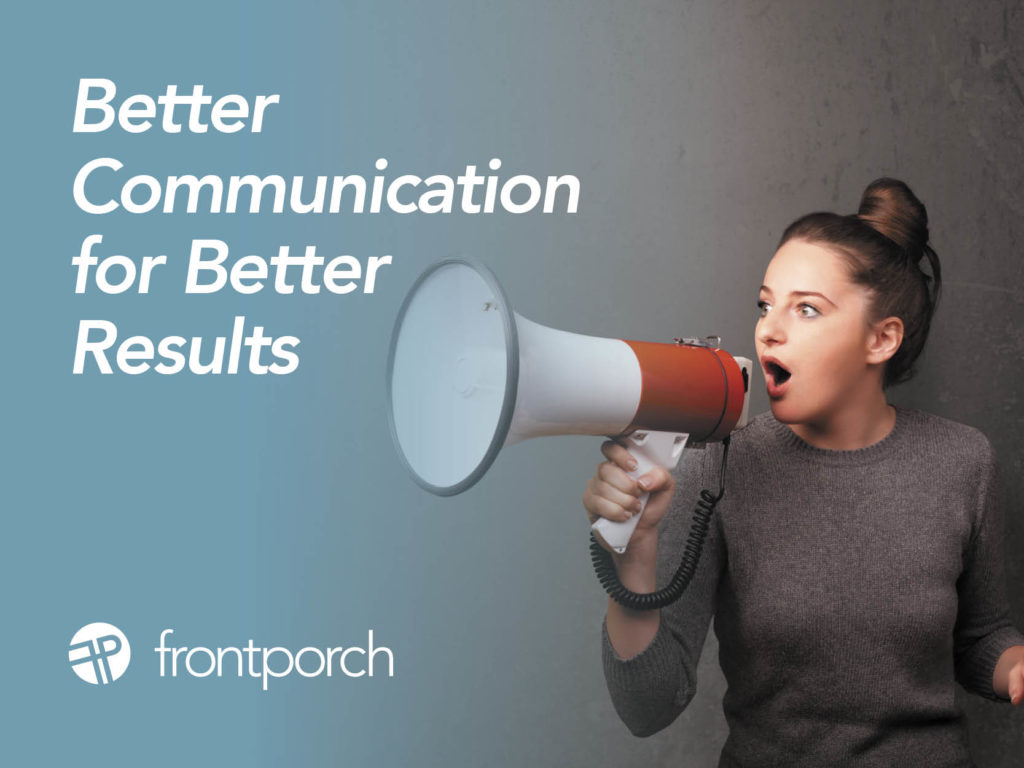
In its simplest form, communication is the act of transferring information from one person or group to another. Whether personally or professionally, through talk or text, we typically spend much of our day communicating with other people.
It sounds simple, right? As someone whose job in account services relies heavily on communication with both team members and clients, I can assure you this isn’t always the case. Remember playing the telephone game as a kid? I do, and I can assure you the message that started the circle wasn’t always the message that ended the circle. Confusion ensued!
Improving Your Communication Skills
Undoubtedly our communication skills have improved since our days playing the telephone game, but we all still fall short in communicating effectively at times. So, how do we get better? Let’s first take a look at a few of the main ways we communicate.
- Verbal Communication
Whether we communicate through face-to-face meetings, a phone call or video chat, all of these are categorized as verbal communication. Using our voice to deliver the message to our audience. - Nonverbal Communication
Nonverbal communication accompanies verbal communication. When we speak, we give off different signals without using spoken words, and sometimes without even realizing we are doing it. This can include facial expressions, posture, eye contact, tone of voice, gestures, how we dress, etc. - Written Communication
There are many ways we can deliver our message through the written word. And, often this is considered the most common and effective way to communicate. It can be through emails, letters, social media, articles, text messages, etc. - Visual Communication
When we communicate visually it is done through a means that can be read or viewed by the recipient and has become more prevalent because of social media platforms. Such as infographics, graphs, videos, slides, etc.
Barriers to Being Effective
There are many barriers that can impede effective communication. Let’s explore a few of them.
- Inattentive
In other words, we simply aren’t paying attention. This can lead to missing important details and misunderstanding or misinterpreting what we do hear. - Mismatched Communications Styles
Does how you prefer to communicate differ from that of the intended recipient? If so, there’s most likely a greater chance of miscommunications. - Poor Timing
No matter how well thought out and prepared your communication might be, your message will fall short if it isn’t delivered at an appropriate time. - Too Much Jargon
Although at times jargon can make your communication more efficient, often, your intended audience will not understand it and will be left in a state of confusion.
Troubleshooting Your Communication Gaps
Now that we have outlined both some of the common forms of communication and barriers to communication, let’s talk about how we can overcome them.
- Active Listening
If you find yourself struggling to absorb the communication, you might want to read up on active listening. It involves digesting the information, and then responding back through paraphrasing, asking questions and body language cues. - Identify Communication Styles
You need to understand not only if your audience prefers to communicate face-to-face vs. emails, etc., but also if they prefer straightforward and to the point messages vs. being inundated with all the details. The answer may vary based on what is being discussed and you need to adjust your communication style accordingly. - Think Before You Communicate
Timing is everything when it comes to communicating to your audience. Are you sending your message right before a big event, a planned vacation or late at night? Always make sure you take these things into consideration if you want to be heard. - Use Plain and Simple Language
Shorthand and acronyms can save you time, but often it leads to your recipient feeling frustrated and confused because the language isn’t understood by all. Make sure you tailor your message to your audience, and only use jargon if you know it will be understood by all.
Regardless of how you communicate to your audience, there are going to be instances when it is ineffective. But, if you keep in mind some simple obstacles to avoid, you’ll find these instances will be few and far between.
